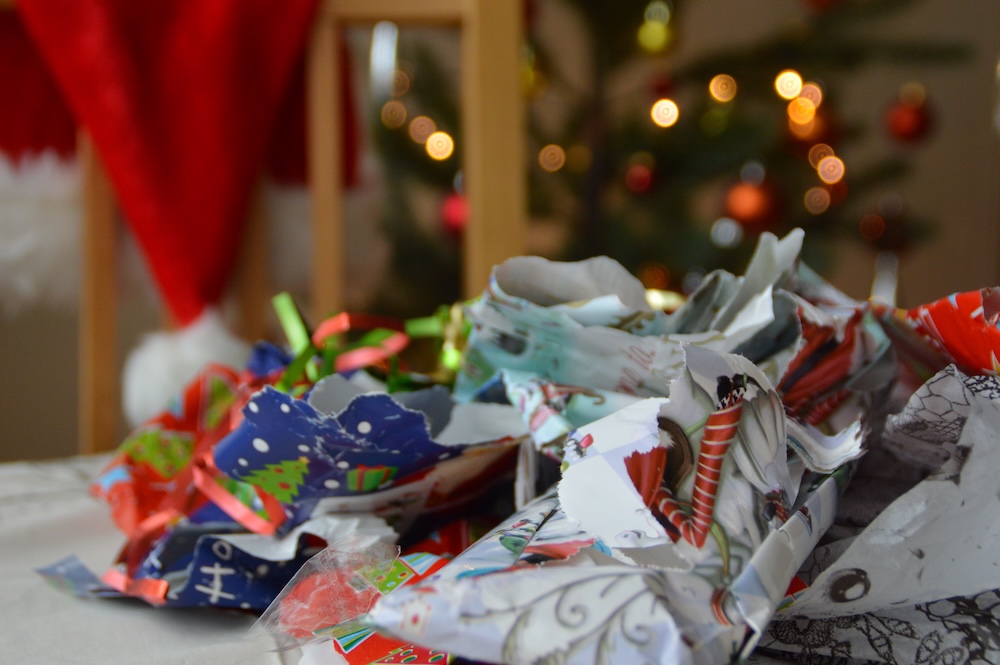The Hidden Footprint of Celebration
The holiday season brings joy—but also waste. In the U.S., household trash jumps by more than 25% between Thanksgiving and New Year’s, creating an extra 25 million tons of garbage in just a few weeks. Ready to rank the holidays from most to least wasteful—and learn how to celebrate without costing the planet?
1. Christmas — The Champion of Waste
Why It’s Worst:
- Americans toss 2.6 billion pounds of wrapping paper annually.
- Between Thanksgiving and New Year’s, households generate 25% more waste.
- In the U.K., an extra five million tons of waste shows up at landfills over the festive period—4 million of that in wrapping paper and bags.
Sustainable Swaps:
Use kraft paper, reusable fabric wraps, or recycled materials. Decorate with natural items and minimize single-use decor to celebrate more sustainably.
2. Thanksgiving — The Food Waste Fiasco
Why It’s Harmful:
- An estimated 316 million pounds of food go to waste at Thanksgiving, with most from turkey and milk.
- That wasted food production emits a carbon footprint equal to driving 190,000 cars for a year.
Sustainable Swaps:
Plan meals better, share leftovers, compost food scraps, and opt for real dishware to reduce the environmental impact of this major feast.
3. New Year’s Eve & Day — Glitter, Party Trash, and Fireworks
Why It Ranks Here:
Fireworks release particulate pollution and debris, and single-use party wares (plastic flutes, confetti) pile up fast. Travel also spikes, adding a surge of emissions.
Sustainable Swaps:
Use reusable glassware, compost confetti alternatives, attend community light shows or drone displays, and avoid solo firework events. A drink in a real glass? Now that’s memorable.
4. Halloween — Disposable Costumes & Pumpkin Mess
Why It’s a Big Problem:
- The U.S. buys 600 million pounds of candy each Halloween—wrapped in plastic that mostly ends up in landfills.
- In the U.K., 7 million costumes are discarded annually—and 83% are non-recyclable plastic.
- In the U.S., roughly 1 billion pounds of pumpkins are thrown out, producing methane in landfills.
Sustainable Swaps:
DIY or thrift costumes, distribute recyclable treats, compost pumpkins or cook them, and make decorations biodegradable or reusable.
5. Valentine’s Day — Cards, Roses, and Empty Packaging
Why It’s Costly:
- In the U.K., over six million cards are thrown away, with 10% discarded the day they’re received.
- Many flowers and chocolates come wrapped in plastic and are fleetingly stored before disposal.
Sustainable Swaps:
Send handwritten cards on recycled paper, give potted plants or dried bouquets, choose fair-trade chocolates, and opt for sustainable wrapping or reusable packaging.
6. Easter — Plastic Eggs & Single-Use Baskets
Why It Creates Waste:
- Hundreds of millions of plastic Easter eggs are used once and thrown out, contributing to over 30% of household packaging waste.
- Over 180 million chocolate bunnies are produced, generating significant emissions and often with non-recyclable packaging.
Sustainable Swaps:
Use wooden or fabric eggs, fill reusable baskets, choose bulk-bin or low-waste candy, and pick durable garments instead of one-time outfits.
7. Fourth of July — Barbecues & One-Time Decor
Why It’s Wasteful:
- Disposable tableware and decorations add up fast on the holiday BBQ circuit.
- Using personal fireworks adds pollution, debris, and safety risks.
Sustainable Swaps:
Bring your own washable plates and utensils, use fabric banners or thrifted decor, and attend community shows rather than purchase fireworks.
The Power of Planning Ahead
Haste makes waste. When we rush to celebrate, we end up grabbing cheap, plastic-heavy decor or impulse purchases. Thoughtful, early planning lets us:
- Shop sustainably and avoid impulse buys
- Save money and choose durable, reusable options
- Keep a mindful mindset all year, so joy doesn’t cost the Earth
- Choose quality over panic purchases and make celebrations more meaningful
By spreading craft, gift, and decoration planning across months, our celebrations become lighter—on our wallets, on our stress, and on the planet.
Final Thoughts
These rankings underscore a clear truth: holiday waste matters—and some traditions have a much bigger footprint than others. But with thoughtful swaps, mindful habits, and planning, celebrations can remain joyful, special, and sustainable.
The memories come from family, friends, and laughter — not the disposable glitter, plastic packaging, or food scraped into the bin.









Reader Interactions